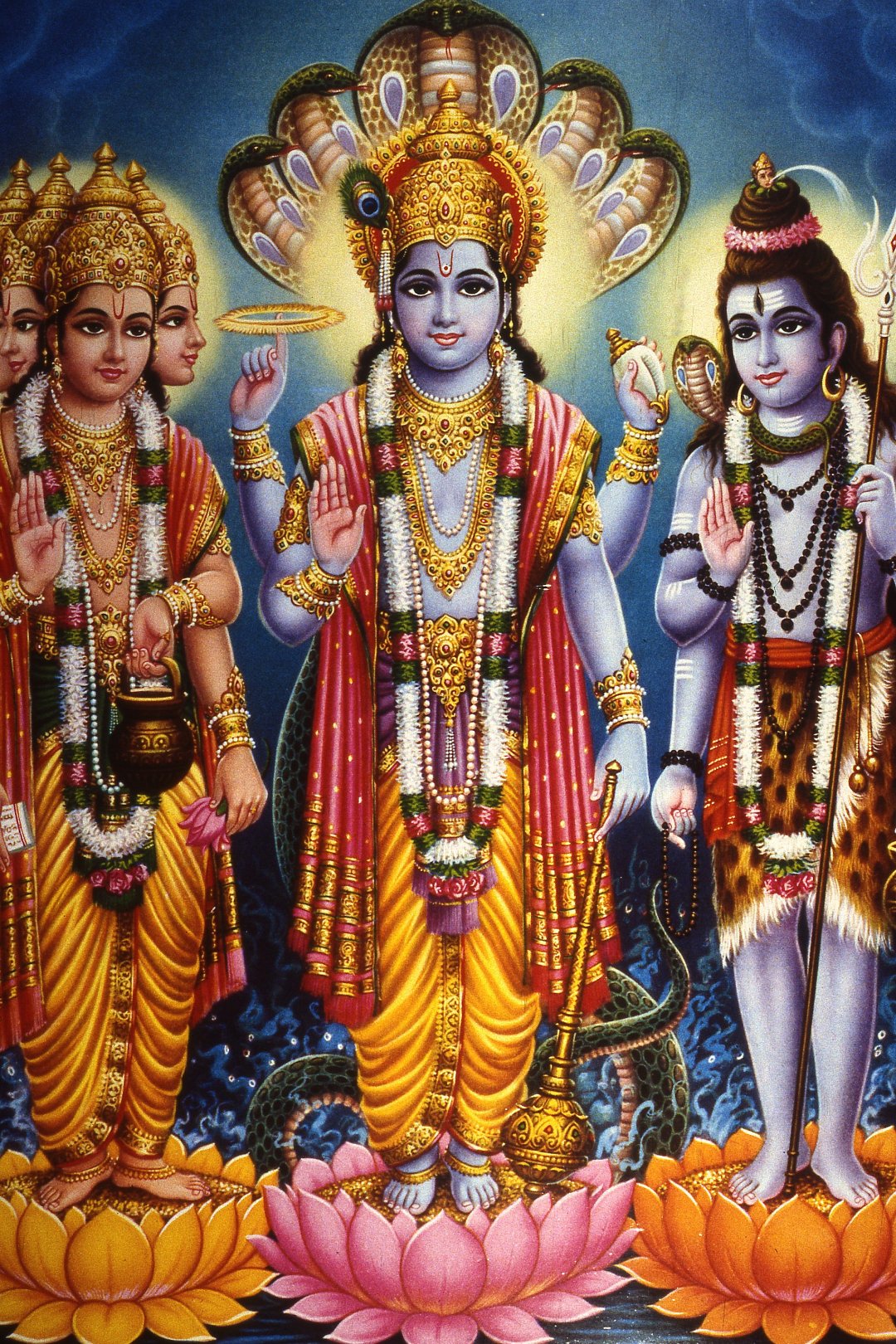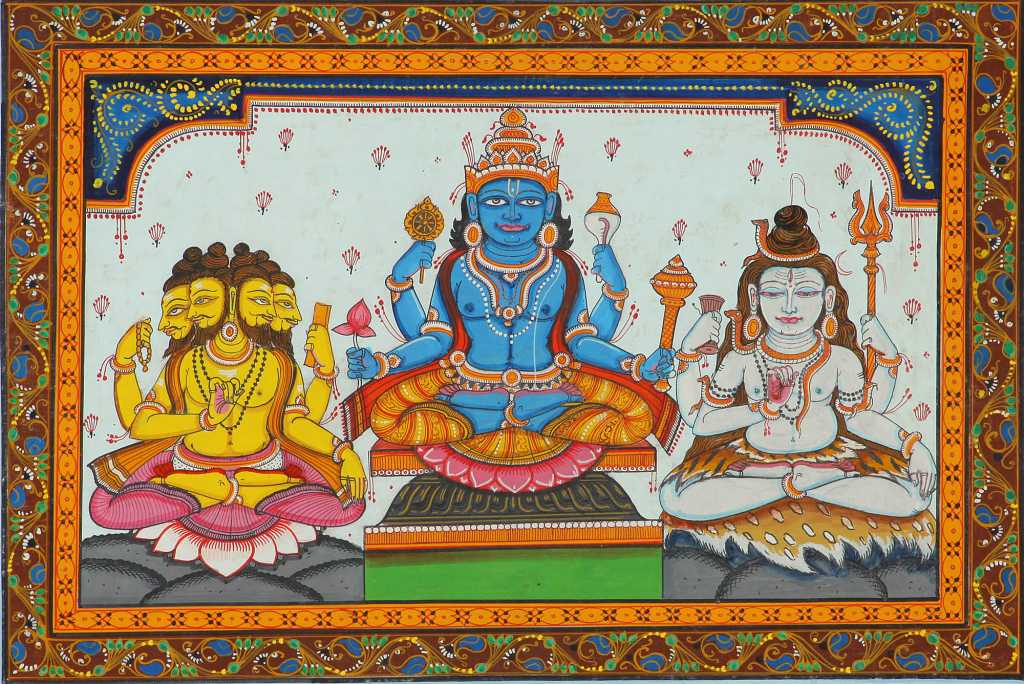
Hinduism, also known as ‘Sanatana Dharma’ or ‘eternal way of life’ is the oldest religion in the world. Hinduism is a fusion or synthesis of various Indian cultures and traditions with diverse roots and no founder. Hindu texts are classified into Shruti (heard) and Smriti (remembered). These texts include theology, philosophy, mythology, Vedic Yajna, Yoga among others. Major scriptures include the Vedas and Upanishads, the Bhagwad Gita and the Agamas.
Over the years, many concepts of Hinduism have been misunderstood and misinterpreted by some of its followers. This led to practices that projected Hinduism as a religion of discrimination, bias and inequality. Also, a lot of concepts have been twisted by the Nehruvian and Marxist leaders and historians of India for strictly political reasons as in India, the bitter truth is that if a person indulges in Hindu bashing, he or she is considered as ‘Progressive’ and ‘Rational’.
The two great epics of Hinduism are Ramayana and Mahabharata. Some of the events in these epics have also been twisted to project the incarnations of Vishnu (Rama and Krishna) in bad light.
This column aims to talk about and decode some of these misconceptions.
Misconceptions about Hinduism: Hinduism promotes inequality and discrimination via the caste system:
This is one of the often-heard criticisms of Hinduism. As per Hinduism, people are divided into four varnas: Brahmins (priestly or teacher class), Kshatriyas (warrior class), Vaishyas (merchant class) and Shudras (labour class). Hinduism clearly states that this division or classification is strictly not to be made on the basis of birth or heredity of a person and must be based on the qualities and inclinations of a person. The Varna system was developed to help individuals find a job as per their caliber and to avoid shortage of skilled manpower in society. There are numerous examples where people have been placed in a varna different from their birth.
Sage Valmiki, the author of Ramayana and revered as Aadi Kavi or First Poet, was a thief and a hunter before he met Sage Narada and realized his sins. He then wrote the Ramayana and since then, he has been treated as a Brahmin.
Veda Vyasa was born to the fisherwoman Satyavati, but owing to his immense knowledge was accorded the status of a Brahmin.
Kalidasa, widely regarded as the greatest poet and dramatist in Sanskrit language, was a wood cutter before he realized his true potential. He has also been accorded the status of a Brahmin.
Ravana, the king of Lanka and the chief antagonist of the Ramayana, was a Brahmin by birth. But owing to his military prowess, he was treated as a Kshatriya.
Karna was believed to be the son of a charioteer, but owing to his military prowess and skills in archery was accorded the status of a Kshatriya. Whenever he was insulted by the Pandavas for his birth, they were admonished by Lord Krishna, who referred to Karna as ‘Daanveer’.
There is no denying that over the years, this system started to become too rigid and birth-based. This led to ill treatment of the lower castes by the upper castes and practices like untouchability. The misconception of caste system has been exploited for political reasons to paint Hinduism as Evil and led to various banes like the caste-based reservation system.
Misconceptions about Hinduism: Hinduism promotes violence against women via practices like Sati
Sati was an archaic Indian custom where a widow immolates herself on her husband’s pyre shortly after the husband’s death. Mention of Sati can be dated back to 4th century BC, while the evidence of practice of Sati only appears beginning between 5th and 9th centuries AD.
None of the texts or scriptures of Hinduism promote or prescribe Sati. The only instance that is remotely close to Sati is in the Mahabharata where Madri, the wife of Pandu immolates herself on Pandu’s funeral pyre. But Madri does this out of remorse and guilt and not because she was forced by anyone to jump into the pyre. It must be noted that Pandu’s other wife Kunti does not indulge in this act. There have been several widows in the Ramayana and Mahabharata, who lived a peaceful life after the death of their respective husbands. The three wives of King Dasharatha (Kaushalya, Kaikeyi and Sumitra), Kunti (wife of Pandu in Mahabharata), Uttara (wife of Abhimanyu) did not indulge in Sati nor were they forced to end their lives.
This evil practice was created by narrow-minded and evil human beings and must not be attributed to Hinduism.
Misconceptions about Hinduism: The Bhagwad Gita promotes violence, killings and warfare
When the Pandava prince Arjuna, on seeing his near and dear ones like his grandsire Bhishma, his teachers Dronacharya and Kripacharya and his paternal cousins on the other side of the Kurukshetra battle field, is invaded with grief and emotional turmoil and shows a disinclination to fight, Lord Krishna recites to him the Bhagwad Gita.
The essence of the Bhagawad Gita is adherence to one’s duty, righteousness, the concept of the immortal soul and temporary body, salvation among others. Lord Krishna says that as a Kshatriya, it is Arjuna’s duty to fight evil and protect the cause of Dharma. The Pandavas went through a lot of persecution from the Kauravas for no fault of theirs. Food poisoning of Bhima, attempt to murder the Pandavas and their mother through arson, attempt to disrobe the wife of Pandavas during the game of dice, engagement of a demon to attack and murder Arjuna while he was on penance are instances of Kauravas being rather unfair to the Pandavas. Before the war, Lord Krishna tried to bring in peace between the two sets of cousins, but the peace process was dismissed by the Kauravas. Owing to all this and to ensure the victory of Dharma over Adharma, it becomes Arjuna’s duty to engage in war.
It is therefore not true that the Gita promotes warfare and violence in general. The Gita promotes adherence to one’s duty and upholding righteousness.
Misconceptions about Hinduism: Hinduism promotes superstition
Hinduism is said to promote various superstitions, some of which are discriminatory against women. Almost all these so-called superstitions have a scientific reasoning behind them.
Astrology, for example, has been repeatedly mocked and dismissed as rubbish by our self-proclaimed intellectual rationalists (readers will well remember the Bollywood movie Lage Raho Munnabhai). But astrology is in fact a scientific correlation between the positions and movements of celestial bodies and life and physical processes on earth. This is not to promote making all the important life decisions purely on astrology as astrology is based on interpretations by an astrologer. This is also not denying the fact that a lot of fake and money-minded astrologers exist today. But, dismissing astrology as rubbish and advising people to completely shun it just because one does not have faith in it is nothing but intolerance to an alternate view point.
We’ve been hearing a lot about how Hinduism discriminates against women by not allowing them to enter temples during menstruation. Unlike what is now thought by most people, menstruation was originally considered a highly sacred process, equipping women with strong powers which could be life-giving (hence worshipping women) or dangerous (hence secluding women). It is believed that during menstruation, women are constantly dissipating energy from their bodies. Most religious chants are meant to balance out the energies in our body. However this would interfere with the natural losing of energy that must happen in menstruating women to prevent excessive energy build-up. Hence, menstruating women are told to keep away during such occasions. To sum up this issue, there is no discrimination against women here as claimed by some of the feminist activists. Campaigns like ‘Happy to Bleed’ are nothing but a display of arrogance by ignorant women.
There are a lot of other so-called superstitions like dissuading one from sleeping with head towards north (this is because the earth’s magnetism and our own body’s bio-magnetism will repel each other and affect our health in a negative manner), ringing the temple bell (this creates unity between the left and right brain thereby creating a positive vibration), bathing after attending a funeral (after death, body starts decomposing fast and the people around are exposed to bacteria) which have a scientific reason behind them. It is just that the critics are unaware of them and blindly start criticizing.
Misconceptions about Hinduism: Lord Rama did not trust Sita and hence asked for an Agnipareeksha and later banished her
Lord Rama, an incarnation of Vishnu, is often regarded as Maryada Purshottam, a thorough gentleman having a flawless character. But there have been people who’ve pointed fingers saying Rama did not trust Sita and demanded an Agnipareeksha after he relieved her from Ravana. The reality is, Rama never distrusted Sita and wanted to place her above any reproach in future and hence wanted the agnipariksha.
Another version is, Rama and Sita are incarnations of Vishnu and Lakshmi and hence, they knew before-hand that Sita was going to be abducted by Ravana. Lord Agni, the fire-god created a Maya Sita. The Maya Sita was abducted by Ravana and the original Sita hides in the fire. During Agni Pariksha, the two exchange places and the real Sita reunites with Rama.
Another criticism of Lord Rama is that he banished Sita to the forest after a washer man doubts her character. This is also not true. After getting to know what the washer man said, Sita herself decides to go to the forest. As per the strict moral code of Lord Rama, the ruling couple should be acceptable to each and every citizen of the country. Sita places the country above her own self and decided to go to the forest.
Misconceptions about Hinduism: Ravana was a Sri Lankan and hence a Dravidian:
This theory has been propounded by the DMK to project the party as a messiah of Dravidians against the Aryan aggression. The fact is, the Aryan Invasion Theory (AIT) is fictional and has been created by the Europeans to divide-and-rule the Indians and the theory has further been propounded by Marxist and Nehruvian historians like Romila Thapar. Moreover, Ravana was born a Brahmin in the northern part of India and later invaded Lanka after hearing about its prosperity. So the argument of Ravana being a Dravidian stands completely shattered.
